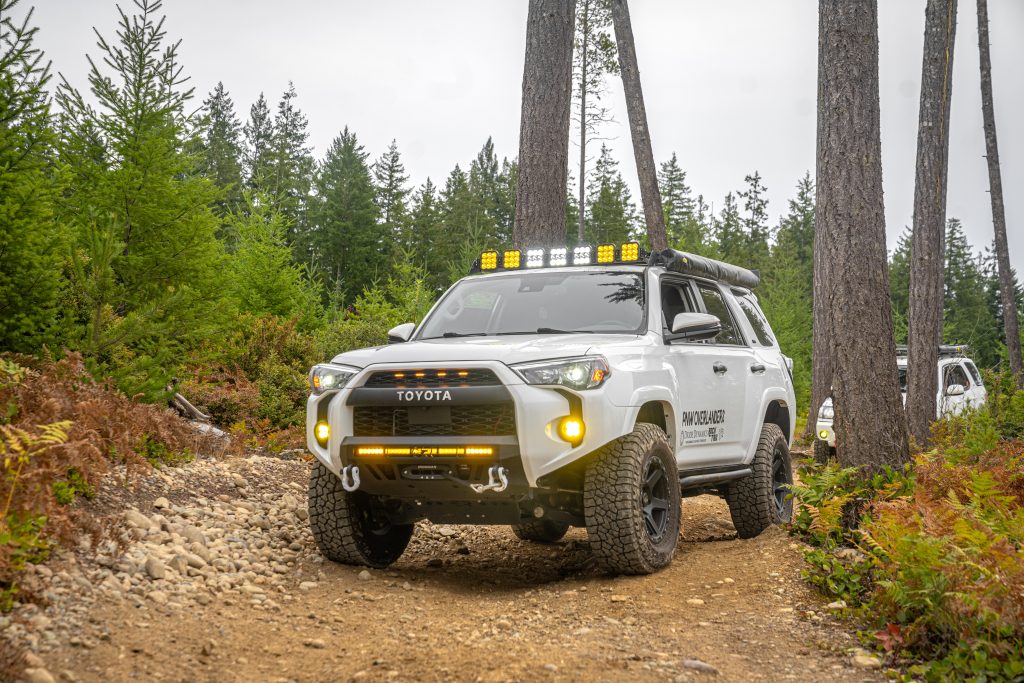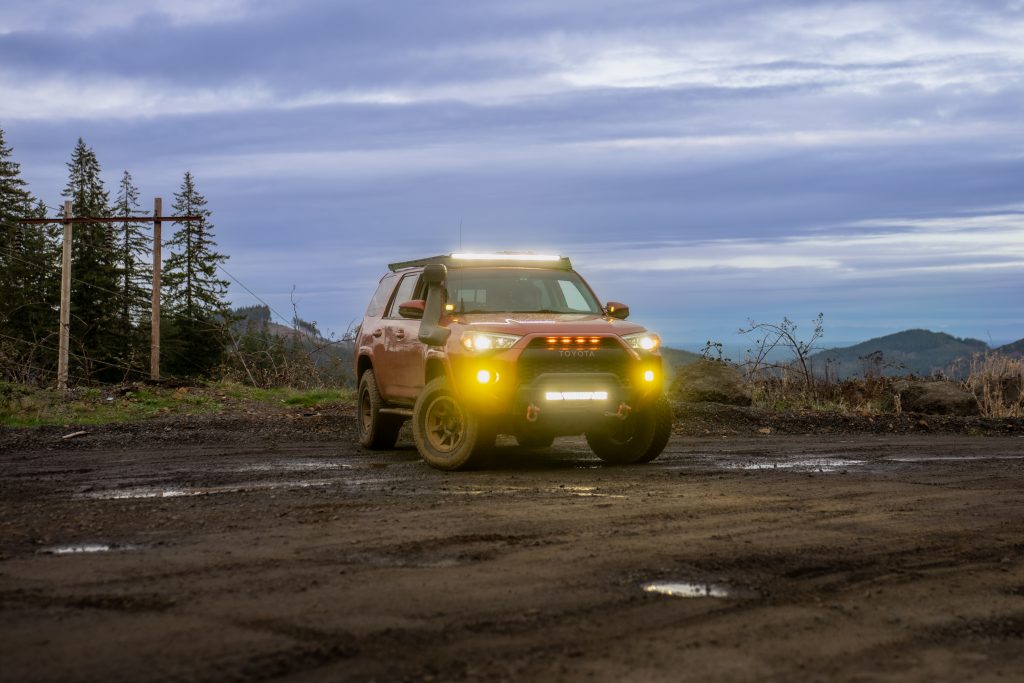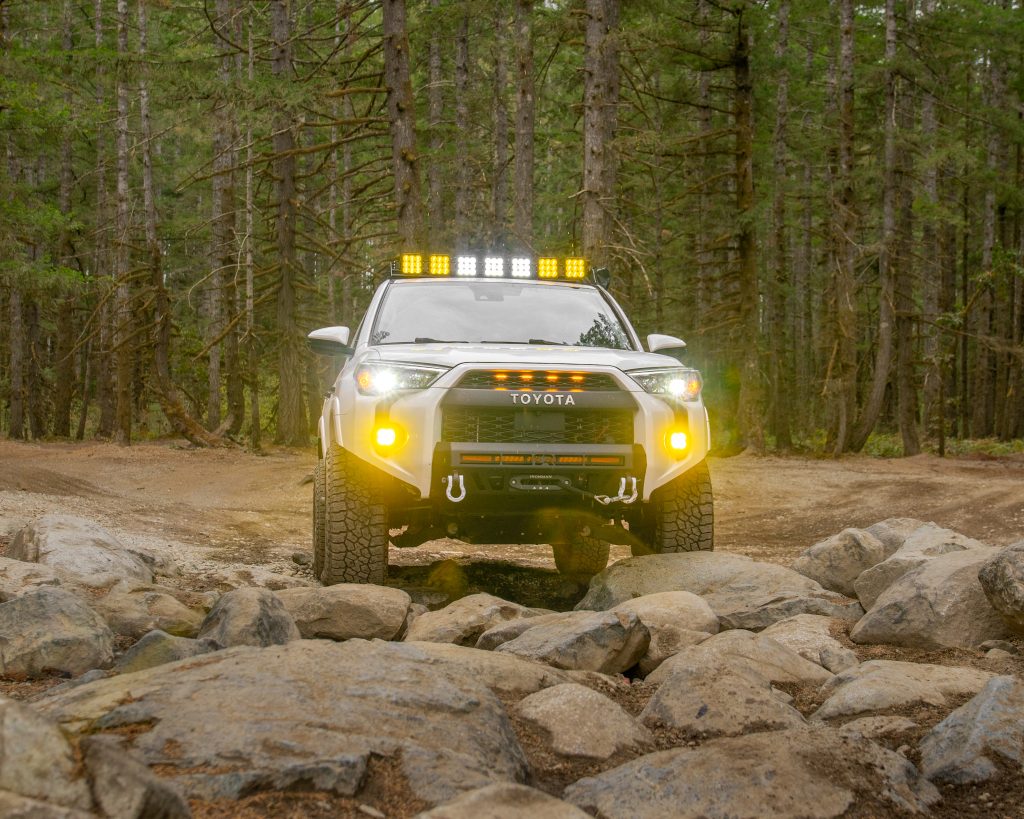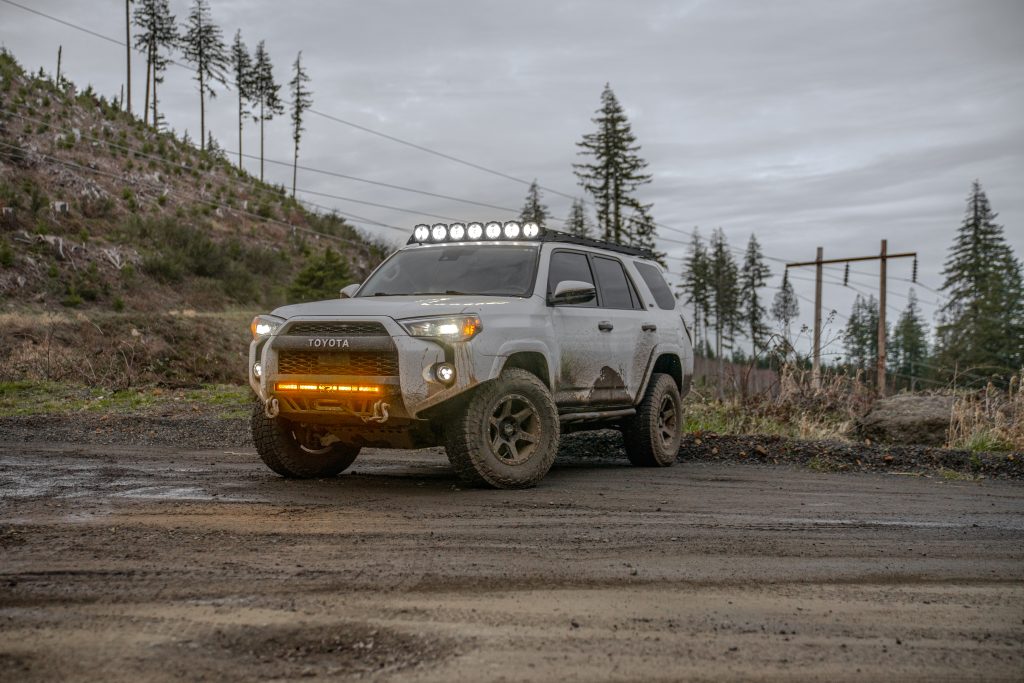
Outfitting your 4Runner with the right lights is crucial for maximizing visibility and safety during any adventure, especially at night. When it comes to off-road lighting, the color temperature of the lights can make all the difference. For example, do you frequent dusty conditions or need maximum illumination at night?
I’ll discuss the various color options from most manufacturers and compare the two most popular options: white and amber/yellow!
Table Of Contents
Color Temperature Scale

The Color Temperature Scale is like a thermometer for light color, measuring how warm or cool it looks. It’s based on a concept called a “black body radiator,” similar to a theoretical hot object that changes color as it heats up. Imagine heating a piece of metal: it starts red, then turns orange, yellow, white, and finally blue when extremely hot.
The scale is measured in Kelvin (K). Lower temperatures on the scale correlate to warmer, more yellow light, while higher temperatures are a cooler blue.
Here’s A Breakdown:
- <3,000K: These are warm colors such as amber and yellow. They are known to better cut through fog, snow, and other difficult-to-see weather conditions. They also show contours in the terrain better.
- 3,000K – 5,000K: This range includes neutral to cool white colors. You’ll typically find Halogen or HID bulbs in this category. These lights provide good visibility in clear conditions but may not be the best for off-road use.
- 5,000K – 6,500K: In this range, you’ll typically find LED lights, which are very similar to natural daylight. LED lights are great for off-roading because they are bright, durable, and long-lasting. They also use less electricity and produce less heat than halogen or HID bulbs.
- >6,000K: These are cool blue hues. While they have specialized applications, they are less common for general off-road use due to their intense and sometimes harsh light. I wouldn’t go much higher than 6,000K, as visible light diminishes after this point.
What’s Best For You

Choosing the correct color temperature for your off-road lights can significantly enhance visibility and reduce eye strain, especially in challenging conditions. Different terrains and weather conditions demand different lighting solutions. For example, yellow or amber light will cut through fog, dust, and rain more effectively. On the other hand, if you are bombing down a trail solo and in clear conditions, white light will help you see the farthest.
Enhancing Visibility
Amber/yellow lights will have a longer wavelength, allowing them to penetrate through different conditions better. In contrast, white lights which appear brighter to the eye, can cause glare in poor weather.
Reducing Eye Strain
Driving off-road, especially at night, can be taxing on the eyes. A warmer color temperature can reduce eye fatigue during prolonged use. White light, on the other hand, keeps you more alert with its crisp output.
Optimal Performance In Different Conditions
A great way to get the best of both worlds is by purchasing a light with a yellow or amber cover. These covers slightly reduce the light’s overall output but allow you to switch between white and amber light as needed.
Popular Brands To Consider
- VLEDS (mainly bulbs)
- KC HiLites
- Baja Designs
- Rigid Industries
- Lightforce
- Cali Raised LED
- Diode Dynamics
- ARB
Amber Vs. White

Many aftermarket lighting manufacturers offer white or amber (yellow) lighting options. We aren’t going to get too much into the specifics of each lighting option in this post, but it’s important to understand where and how to use certain lights.
Amber/Yellow (1,000K to 3,000K)
Ideal Applications…
- Fog Lights: Their lower placement and warm color minimize reflection and glare, enhancing your ability to see the road ahead.
- Chase Lights: Mounted to the rear, they will offer added visibility to anyone behind you.
White (5,000K to 6,500K)
Ideal Applications…
- Headlights: Your main driving lights should be white to cover a wide and long distance. They help you see far ahead and notice obstacles or changes in the terrain early on. Upgrading your low-beam and high-beam bulbs will make the biggest difference in visibility.
- Ditch Lights: These lights focus a narrow beam on a specific area. They are perfect for spotting wildlife, obstacles, or changes in the terrain in the distance.
- Camp Lights: Ideal for setting up camp or working on repairs after dark, these lights must provide broad and even illumination when you don’t need to preserve night vision.
Which is Better?
Honestly, it depends. Consider what types of driving you frequent most and how many lights you’re adding to your truck. Both amber and white lights have pros and cons and are best suited to certain applications. That’s why I believe having a mix of both color temperatures is extremely important to achieve maximum visibility.
However, if you don’t want to overdo it or are on a budget, lights that offer amber or yellow covers are the best of both worlds.
Final Thoughts

Choosing the right light temperature for your off-road lights can make a huge difference in your driving experience both on and off-road. I hope this discussion has shed some light (pun intended) on the various color options and how they can improve visibility in different conditions.
Note: Always check local regulations to ensure your lights comply with DOT standards and avoid getting ticketed. Also, always be considerate of other drivers out on the streets—you don’t need every one of your lights on all the time!

Hi Marie, thank you for this great review on off road lights. It will be a big assist when purchasing new lights.
The first lighting upgrade I did was to install Philips X-Treme Ultinon LEDs in the fog lamps and add yellow Lamin-X film over the lenses. Great in snow, rain and fog. Cheap upgrade to boot.
Nice post TY. Just to give some history . In France up till a few years ago all the cars had to have yellow lights. This was due to the fog and rain conditions which are more common there. One good set of yellows is a good idea.